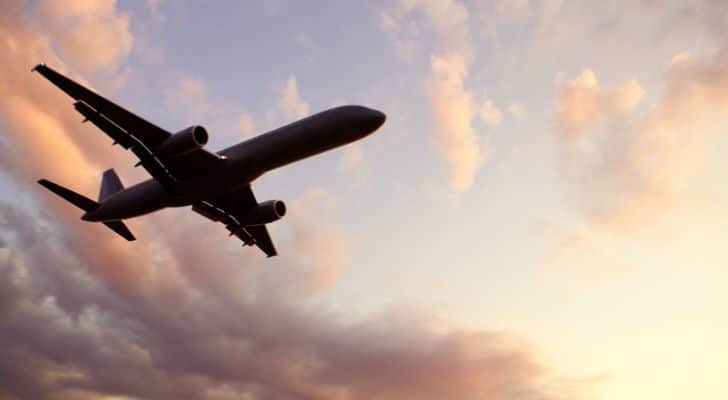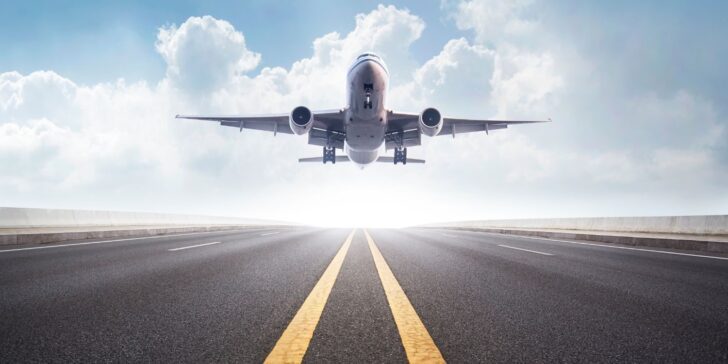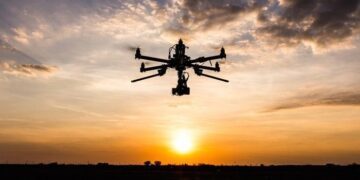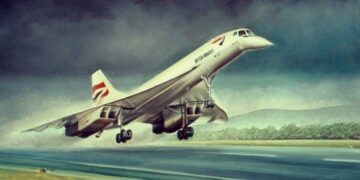Nearly three million passengers fly in the U.S. every day. For most, it’s fun; for some, it’s fearful.
Yet, it’s a remarkable method of getting from here to there in a remarkably safe mode for often remarkably cheap prices.
If you’re looking to learn all about airplanes, look no further!
Including commercial flights, private airplanes, and military craft, up to 20,000 planes are airborne at any given moment, carrying up to 2 million passengers.
About 87 percent of Americans have flown at least once.
People 35 to 44 years old fly the most, both domestically and internationally, and men fly more than women.
The U.S. leads the world in the number of passengers carried per year, at about 926.74 million. China is second.
The U.S. Federal Aviation Administration handles approximately 16,405,000 flights annually, averaging 45,000 flights per day.
There are 5,082 public airports in the U.S. and 14,511 private airports.
The busiest airport in the world is Hartsfield–Jackson in Atlanta, Georgia, with over 93 million passengers annually.
Approximately 725,000 aircraft land and take off from Hartsfield-Jackson yearly, just under 2,000 per day.
O’Hare Airport in Chicago has non-stop flights to 214 destinations, more than any other airport in the world.
O’Hare has eight runways, more than any other civilian airport in the world.
Delta Air Lines is the largest airline in the world regarding the number of aircraft, with 979 planes.
International air traffic fell by 75 percent during the COVID-19 pandemic years of 2019-2021. U.S. domestic air travel dropped by nearly 50 percent.
Over 700,000 people are employed by airlines in the U.S., and about 85 percent of those jobs are full-time.
If you include jobs in related fields, such as working at airports or in factories building planes, about 11.3 million people are employed in the aviation industry.
U.S. airlines employ around 90,000 flight attendants.
Florida employs more flight attendants than any other state, with about 1,500. South Dakota has the fewest, with 24.
78.9 percent of all flight attendants are women, and 21.1 percent are men.
96.6 percent of airplane pilots are male. Only 3.4 percent are female.
About 74 percent of flight attendants are over 40, while around 61 percent of pilots are over 40.
84.5 percent of U.S. pilots are white.
In the U.S., the average male pilot earns $98,444, while the average female pilot earns $93,629.
The average flight attendant in the U.S. earns about $30,000.
The world’s first regular international airline service from London to Paris began in 1919, 16 years after the Wright brothers’ first flight.
The longest continuous flight without landing ended on February 7, 1959, in Las Vegas, after being aloft in a Cessna for 64 days.
The longest non-stop commercial flight, which is from Singapore to New York City, stretches 9,537 miles (15,348 km) and takes over 18 hours.
The world’s shortest commercial flight is just 1.7 miles long (3 km), hopping from one island to another in the Orkney Archipelago off the coast of Scotland. The whole flight takes just over a minute.
In 1996, the supersonic Concorde set a record for the fastest commercial flight between New York and London, completing the journey in just two hours, 52 minutes, and 59 seconds.
Concorde jets flew for only 27 years before being retired in 2003.
The largest passenger plane ever built is the Airbus A380-800, which can carry 853 passengers if seats are all configured in economy class.
In 1991, a Boeing 747 carried 1,087 refugees during an evacuation from Ethiopia, the greatest number of people ever carried on a single flight.
Today, most airlines have regulations that require the pilot and co-pilot to be served different meals while in flight to avoid the possibility of both becoming ill with food poisoning.
Between 2009 and 2021, turbulence on U.S. commercial flights accounted for 146 injuries requiring hospitalization.
Flight attendants suffer from turbulence-related injuries far more than passengers because they typically are on their feet and not belted in.
When you board a plane, the odds of you dying in a crash are 1 in 816,545,929.
Every billion miles traveled by air results in 0.07 deaths, compared to 7.28 deaths by car and 212.57 deaths by motorcycle.
Between 2015 and 2020, the percentage of commercial flights completed without injuries was 99.9996.
The middle seats in the back third of the aircraft are the safest seats, especially if they are within five rows of an exit seat.
Of the top ten safest airlines in the world, only one U.S. airline makes the list: Alaska Airlines ranks #8.
The safest airline, with an unblemished record since the early 1950s, is Australia’s flagship airline, Qantas.
Qantas is an acronym for “Queensland and Northern Territory Aerial Services.”
Every commercial airplane can fly safely with just one engine.
Even with no engines, a Boeing 747 can glide 17,000 feet, or just over 3 miles (5.2 km) for every 1,000 feet (305 m) of altitude lost.
When oxygen masks deploy during an emergency, the air supply lasts around 15 minutes. While that doesn’t seem long, it’s long enough to get the plane down to a level where no extra oxygen is required.
Commercial jets are hit by lightning an average of once per year, but the last time an airliner crashed because of a lightning strike was in 1967.
Worldwide, all commercial pilots and air traffic controllers must speak English.
Only 66 years passed between the first flight at Kitty Hawk in 1903 and the moon landing in 1969.
According to one study, 17.2% of people don’t put their phones in airplane mode when they fly.

On your next flight, babies might cry, the food may taste terrible, the drinks might be expensive, and your luggage might be lost.
Still, air travel is not only the fastest but also the safest mode of travel.
After all, statistically speaking, elevators and escalators are the only modes of transportation that are safer than air travel, which carry far more people daily than airplanes.
So, why not show off all your newfound airplane knowledge on that next flight?


















